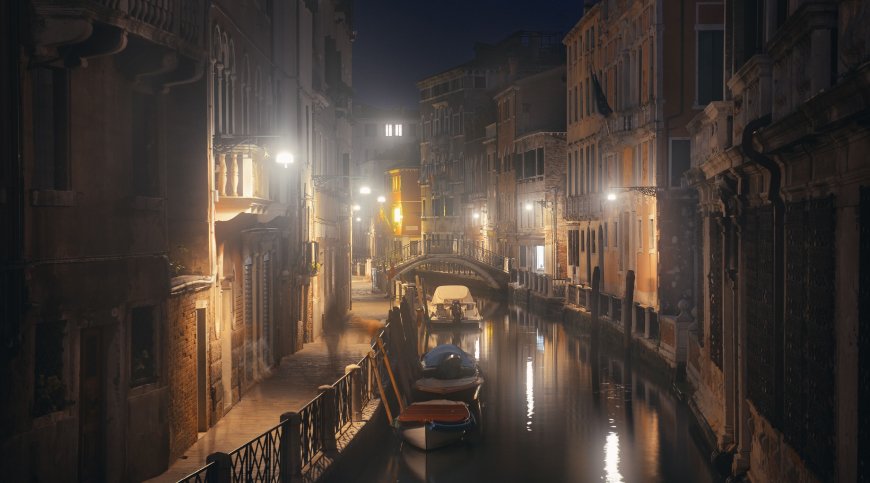Menu

25 October 2018
Canals enveloped in a thick fog, dim lights from streetlights and shadows moving along narrow lanes.
Everything makes Venice mysterious and a treasure chest filled with secrets and legends dating back to time immemorial.
This ancient aura echoing of distant legends is what makes our city special, like the Salvadori creations which are inspired by memories and stories.
The ghost of the bienniale gardens
Legend has it that a ghost wearing a red shirt appeared in 1921, hitting and tripping passers-by near the statue of the Resurgence hero, Giuseppe Garibaldi, at the entrance of the Biennale Gardens. The ghost was said to be that of Giuseppe Zolli, one of Garibaldi’s soldiers who had promised that he would watch over the Hero of the Two Worlds even after his death.
So the Venetians decided to erect a bronze statue of Giuseppe Zolli behind the statue of Garibaldi. From then on, the ghost was never seen again, leaving passers-by in peace and keeping his promise.
The cursed palazzo along the Grand Canal
In Venice there is an unmistakable, elegant and majestic palazzo, richly decorated with medallions of coloured marble and Istria stone, but known by all as the “cursed palazzo.”
Located almost at the end of the Grand Canal and built at the behest of Giovanni Dario in 1479, a chilling curse is said to hang over the building because all those who purchased the house have died in tragic or mysterious circumstances.
Various hypotheses have been put forward about this cursed residence: some claim that the building was built on an ancient Templar cemetery, while others think that Ca’ Dario is adversely influenced by the talisman designed to ward off negativity coming from the building next door.
Truth or superstition? Venetians believe in the curse and many of them stay away.
The stone heart of the Sotoportego dei Preti (Priest’s Tunnel)
The Sotoportego dei Preti is located in the Castello district and has a heart of red brick stuck in the vault.
It is shrouded in a legend of a great love that dates back to distant and mysterious times.
Orio, a Venetian fisherman, captured a beautiful mermaid named Melusina in his net. The two fell in love, and Orio insisted that she marry him and give up her tail for human legs. There was just one condition: until the day of the wedding, Orio could not see her on a Saturday. The young man agreed and for two weeks stayed away on the appointed day. But on the third Saturday, intrigued and perhaps even jealous, he broke his promise.
When he arrived home, a snake appeared before him which turned out to be Melusina herself, the victim of a spell that could only be broken by love and marriage. Orio married the mermaid and the spell was broken. They were happy and had three children together. After some time, Melusina grew ill and died. The fisherman, even though filled with pain for the loss and worried about leaving his children alone, continued to go fishing in order to support his family. Every time he returned home, he noticed that the house was clean and tidy and that his children were being cared for. One day, he came home early from work and found a snake in the kitchen, terrified he killed it.
From that day on, when Orio returned home from fishing, the house was always in disarray and it dawned on him what he had done. The snake was his beloved Melusina, or rather, the animal nature that had survived death. He realised that he had lost Melusina forever.
A red brick heart was set on the vault of the Sotoportego dei Preti to commemorate the home of Orio, the fisherman who fell in love with the beautiful mermaid, Melusina.
Legend has it that if two lovers touch the heart at the same time, their love will last forever.

